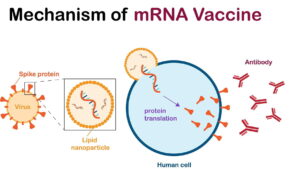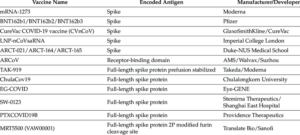The Potential of Lipid Nanoparticles in mRNA Vaccine Delivery
In recent years, researchers have been actively exploring new treatment modalities for infectious diseases, with a particular focus on the development of nanomedicine. Nanomedicine involves the use of nanoscale materials to diagnose and treat diseases, including the targeted delivery of drugs to specific locations within the body. One promising approach in disease prevention and control is the use of mRNA vaccines, which provide a strong immune response and can be effective against viral lung infections such as influenza, coronavirus, and respiratory syncytial virus (RSV).

mRNA vaccines differ from traditional vaccines as they contain a strand of genetic material called mRNA, enclosed in a special coating. These vaccines stimulate a robust immune response, resulting in effective and long-lasting protection. To optimize the delivery of mRNA vaccines, researchers have turned to lipid nanoparticles. Lipid nanoparticles offer stability and biocompatibility, making them ideal candidates for delivering mRNA against viral lung infections.
By overcoming biological barriers at both systemic and cellular levels, lipid nanoparticles can enhance the solubility of drugs, help drugs evade the immune system, and prolong their presence in the circulatory system. These nanoparticles can also deliver multiple drug compounds to the target cell, ensuring efficient absorption and release of the drugs.
For targeted delivery, lipid nanoparticle drug delivery systems must possess certain characteristics. They should be capable of reaching specific target tissues, identifying them, and delivering the drug while minimizing damage to healthy tissues. Lipid nanoparticles, including lipoplexes, cationic nanoemulsions, traditional liposomes, solid nanoparticles, and nanostructured lipid carriers, have been explored as potential nanoplatforms for mRNA delivery. Among these options, lipids have shown the most compatibility with cell membranes.
Ionizable lipids are particularly important in lipid nanoparticles for mRNA vaccine delivery, along with other components like cationic lipids, lipid-bound polyethylene glycol (PEG), and cholesterol. The delivery of mRNA through lipid nanoparticles can occur via endocytosis and electrostatic binding or through fusion with the cell membrane via reverse non-bilayer lipid phases. Lipid nanoparticles play essential roles in promoting the release of mRNA from the endosome to the cytoplasm and controlling the uptake of mRNA into the target host cell.
Implications for Influenza, Coronavirus, and RSV Vaccines

The application of lipid nanoparticles in mRNA vaccines has shown promising results for viruses such as influenza, coronaviruses (including SARS-CoV, Middle East Respiratory Syndrome, and SARS-CoV-2), and respiratory syncytial virus (RSV).
For influenza immunization, researchers have developed mRNA-1440 and mRNA-1851 vaccines composed of lipid nanoparticles encapsulating pure nucleoside-modified mRNA encoding various viral surface antigens. In animal studies, these vaccines induced specific antigen responses, elicited strong plasma cell responses, and generated neutralizing antibodies, demonstrating their effectiveness.
In the context of coronaviruses, lipid nanoparticle-based mRNA vaccines have played crucial roles in combating the COVID-19 pandemic. Vaccines developed by Pfizer/BioNTech and Moderna have utilized lipid nanoparticles to deliver mRNA encoding viral antigens, leading to the successful prevention of COVID-19 and highlighting the efficacy of nanomedicine in addressing health challenges.
For RSV, an mRNA vaccine candidate using lipid nanoparticles has been developed for both RSV A and B. While this vaccine has shown promise in expressing prefusion, further research is needed to identify the optimal nanoparticle delivery system.